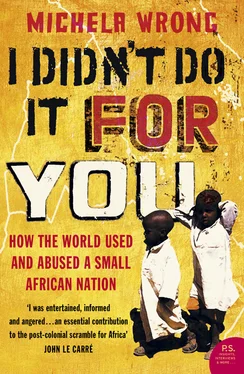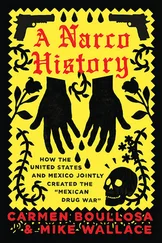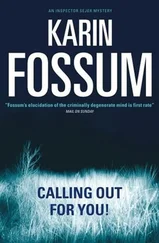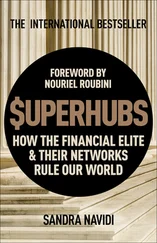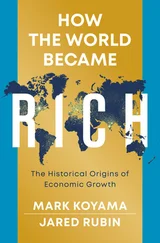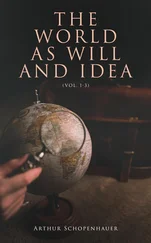Go to the edge of the escarpment, on the outskirts of town, and you will find yourself on the lip of an abyss. You are at eye level with eagles that launch themselves like suicides into the void, leaping into a blue haze into which mountain peaks, far-off valleys and distant sea all blur. At this altitude, only the most boisterous clouds succeed in rising high enough to drift over the city. Pinned down by gravity, they form instead a sulky cumulus eiderdown that barely shoulders the horizon. So for much of the year, the sky above Asmara is clear blue â a delicate cornflower merging into a deep indigo that holds out the promise of outer space. In Western cities at night, the orange glow of street lamps washes out the stars. Asmara, where hotels issue rooms with 20-watt bulbs to keep overheads down, gives out so little light that the reclining crescent moon seems almost within reach at the bottom of the street, and the constellations glisten in your upturned face. When you fly out of the capital in the dark, it feels as though you have quit the earth to soar, like some half-bird, half-man creature from Greek mythology, straight into the Milky Way itself.
With so little between you and the sun, the light possesses an alpine sharpness, so bright it almost hurts, chapping lips and creasing faces. While you shiver in the underlying chill, your skin tans at breakneck speed. Locals handle the contrast in temperatures with a practised twitch of their white cotton shawls, while the outsider finds himself neurotically dressing and undressing as he moves from icy shade to scorching sun and back again. At midday, when the light beats so strongly it numbs the senses, colours are washed away, and the world becomes an over-exposed landscape of black and white. On the street, people become dark silhouettes: here an old woman, wrapped in a shemmah , hides below an umbrella, there a student walks in a familiar Eritrean attitude, exercise book brandished before him to shield his eyes. The light is so white it seems to etch the thinnest of black borders around everyday objects and carve their mark upon the retina, like a nuclear flash outlining a body against a wall.
Up on the plateau, lungs must labour a little to pump enough oxygen into the bloodstream. New arrivals tend to find that alcohol rushes disconcertingly quickly to the head. Down a few of the local Melotti beers here and you can stagger to bed as drunk as if youâd worked your way through a couple of bottles of wine. When combined with the constant awareness of the vertiginous fall on the outskirts of town, the rarefied air, some say, lends itself to a certain giddiness in temperament. âWeâre at 2,500 metres and itâs my belief that those 2,500 metres have a lot to answer for,â a Swiss expatriate told me, struggling to explain a national hot-headedness, a tendency to quick reactions and extreme measures. âThe lack of oxygen, it has an effect on peopleâs brains. Maybe people here go a little bit crazy.â
Asmara itself is a giant monument to colonial folly. When it came to architecture, the Italians simply lost their heads. Outside the capital, the slopes are dotted with modest stone shacks and grass-roofed rondavels. But in Asmara, pride of Benito Mussoliniâs short-lived second Roman empire, the architects of the 1930s unleashed the full, incongruous force of their Modernistic creativity. 1 Their cinemas were Art Deco palaces built for the worship of the glamorous gods of Hollywood, their streamlined apartment blocks paid tribute to the twin cult of speed and technological progress. Fascismâs architects designed petrol stations that looked like aircraft in mid-flight and office blocks that resembled space rockets surging into orbit. With port-hole windows and jutting prows, their factories conjured up visions of vast ocean liners cresting the waves, their shopping arcades curved around hillocks like locomotives shrieking round a turn.
These days, the vigorous designs have lost their clean-cut certainty. The pastel-coloured buildings, painted in the soft apricot, pink and pistachio tones of melting Neapolitan ice cream, are shabby, plaster peeling in great scabs from their exteriors. Red-eyed pigeons coo above broken water pipes and the rusted persiane shutters hang akilter in their grooves. Nonetheless, draped in billowing blankets of bougainvillea, scattered with red-blossomed flamboyants, doused in the purple petals of the jacaranda, Asmara is undoubtedly the most beautiful capital on the continent.
Its beauty has a sombre tinge, for it has been premised on tragedy. No enlightened conservationist ever set out to preserve Asmara from the over-excited developers who spoiled downtown Nairobi or turned Lagos into a tangled mess of motorways and bridges in the 1970s. Conflict kept Asmara locked in time, creating in the process an accidental architectural treasure. While entrepreneurs with more money than sense ripped the hearts out of other colonial African cities, the economic stagnation that came with Eritreaâs long war of secession against Ethiopia proved more effective than any neighbourhood campaign ever could at preserving Asmaraâs pure lines.
Such stultification has bestowed a Toy Town dinkiness upon the capital, the city that time forgot. On my first visit, I felt as though I had walked into a world in which my Italian grandfather would have felt completely at home, an Italy I had only ever glimpsed in family photo albums, because it has ceased to exist in Europe. Perhaps the nostalgia of that borrowed memory went some way to explaining the sudden happiness that gripped me whenever I returned, as tangible as the aroma of berbere spices permeating the streets. The Fiat 500 bubble car, known affectionately as the Topolino, might have disappeared from Romeâs streets, but it still bowled valiantly â if rather slowly â along Asmaraâs avenues. Asmarinos drove museum pieces not because they were admirers of classic cars but because, for decades, no new cars were imported. Every Asmara café served the same stubby brown bottles of unlabelled beer. Since expensive foreign lagers rarely reached these parts, why bother identifying the only brand in town? In the little barber shops old men wearing the same pinched Borsalino hats and woollen waistcoats that once hung in my grandfatherâs closet exposed their jugulars to cut-throat razors, while their friends perched gossiping behind them. The term âblue-collarâ has become such an intellectual abstraction in the West, it gave me a jolt to see that workmen in Eritrea actually wore blue overalls. As for the white-collar business suits displayed in tailorsâ dusty windows, they were as quaintly old-fashioned as the hand-painted shop signs, with their approximate, impressionistic English: âFruit and Vagatablesâ, âPinut Butterâ, âLubricuntâ, âDraiving Schoolâ, âComputer Crush Courseâ.
Those who travel around Africa will be familiar with the mental game of âSpot the Colonial Inheritanceâ. Is that Angolan secretaryâs failure to process your paperwork the result of Mediterranean inertia, fostered by the Portuguese, or a symptom of the bureaucratic obfuscation cultivated by a Marxist government? Is the bombast of a West African leader a legacy of a French love of words, or a modern version of the traditional African village palaver? Which colonial master left the deeper psychological mark: Britain, France, Portugal or Belgium? There are places where the colonial past seems to have left only the most cosmetic of traces on a resilient local culture, and places where the wounds inflicted seem beyond repair. In the river city of Kisangani, where I saw destitute Congolese camping in the mouldering villa built for the ruthless explorer Henry Stanley, rooms intended for pianos and chandeliers holding scores of families who washed out of buckets, I had a sense of a host body rejecting a badly-applied graft. White manâs culture had been imposed with such bullying force, its buildings had never appeared to uncomprehending locals more than meaningless hulks, as surreal and totemic as the motorbike helmet Che Guevara once saw being proudly sported by a tribal chieftain in the equatorial forest. In Eritrea, the opposite seems the case: the graft has taken â so well, indeed, that the new skin has acquired a lustre all its own. âSo youâre half Italian, are you?â Eritreans say when I mention my parentage. âThen half of you belongs here.â At weekends, the plains around Asmara are dotted with groups of cyclists in indecently tight shorts who whiz past grazing goats: the Italians left behind one of their favourite sports. The twittering swallows dive-bombing the steps of the Catholic church of Our Lady of the Rosary, whose bells compete for attention with the muezzinâs call and prayers from the Orthodox cathedral, would not look out of place swooping over a honey-coloured Tuscan piazza. When schoolgirls tumble out of school they wear grembiulini , the coloured aprons once ubiquitous in Italian playgrounds. At the marble-countered bars, where bottles of Eritrean versions of Campari, Fernet Branca, Martini and Pernod form a stained-glass display, hissing Gaggia machines pour out cappuccinos and espressos so strong they are little more than a brown dab at the bottom of a dollâs cup. â Come stai ?â one coffee-drinker asks another, â Andiamo , andiamo ,â call the ticket touts at the bus station, â Va bene , dopo ,â shrugs the unsuccessful beggar (âAll right, laterâ) and little children scream â âTilian , tilian â (âItalianâ) â followed by a hopeful â bishcotti â (âbishcuitsâ) â at the sight of an unfamiliar face, whether Japanese, Indian or American.
Читать дальше
